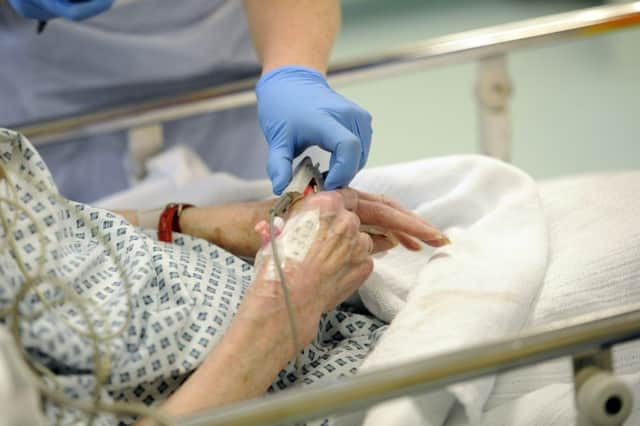The long road to finding an alternative to litigation


Litigation is a costly business. It is expensive and time-consuming. It causes patients worry and stress. It distracts doctors and nurses from doing their jobs. But where patients need redress for harm they have suffered, what is the alternative?
In 2009 the Scottish Government established the No Fault Compensation Review Group. The group reported in 2011 and recommended a no-fault scheme for medical injury. There followed a public consultation – but no legislation. Now the government has published a consultation for a for a no-blame redress scheme. The change is not semantic: no-blame does not mean no-fault.
Advertisement
Hide AdAdvertisement
Hide AdCurrently if a patient suffers harm from clinical treatment, they may raise a medical negligence action in the Scottish courts. They must prove that no ordinarily competent professional, acting reasonably, would have acted as their doctor did. They must then establish that those actions caused them some harm. Expert evidence is usually necessary for both elements. So how does the proposed scheme differ?
Compensation would be founded on the concept of ‘avoidability’: could the harm have been avoided by the use of reasonable care? At first blush this appears distinct from the current test. But expert evidence may still be needed to establish what constitutes avoidable harm or reasonable care.
The patient will only be compensated if they suffered harm lasting at least six months, causally connected to the avoidable harm.
Furthermore, the amount awarded will be based on the same guidelines and past decisions as at present. The assessment simply mirrors that in existing court actions, albeit with a cap of £100,000. Claimants may even be worse off – at present the courts must disregard NHS care when assessing compensation, but the consultation suggests replacing this with a guaranteed package of treatment and care from the NHS and local authorities. Crucially, the right to litigate remains. Those who feel under-compensated can pursue a court action to ‘top up’ their damages. Patients will be prevented from using their no-blame award to fund a litigated claim. Quite how this will work in practice is unclear.
The government’s aim is to end the blame culture inherent in medical negligence claims and create a ‘person-centred’ healthcare system.
Litigation will not be avoided. Indeed there may be satellite litigation on the application of the scheme – on the meaning of avoidability, on causation and on quantum. Significant evidence and expert input may still be needed on all three limbs. The cost of litigation should be reduced – but maybe not by much.
Moreover the scheme does not truly avoid blame. The patient succeeds only if they prove they suffered harm which could have been avoided by the use of reasonable care. That sounds an awful lot like blame. There is also the potential that acknowledging avoidable harm will encourage patients to seek out other forms of complaint. Will we simply see more doctors, dentists and nurses referred to their regulators? Will there be more disciplinary action?
All those involved in medical negligence claims would welcome steps to reduce protracted litigation and unnecessary expense. However, it is far from clear that this proposal would accomplish that.
Responses to the consultation are due by 24 June 2016.
• Graeme Watson is a Partner and Isla Craig is a Senior Solicitor with Clyde & Co
SEE ALSO